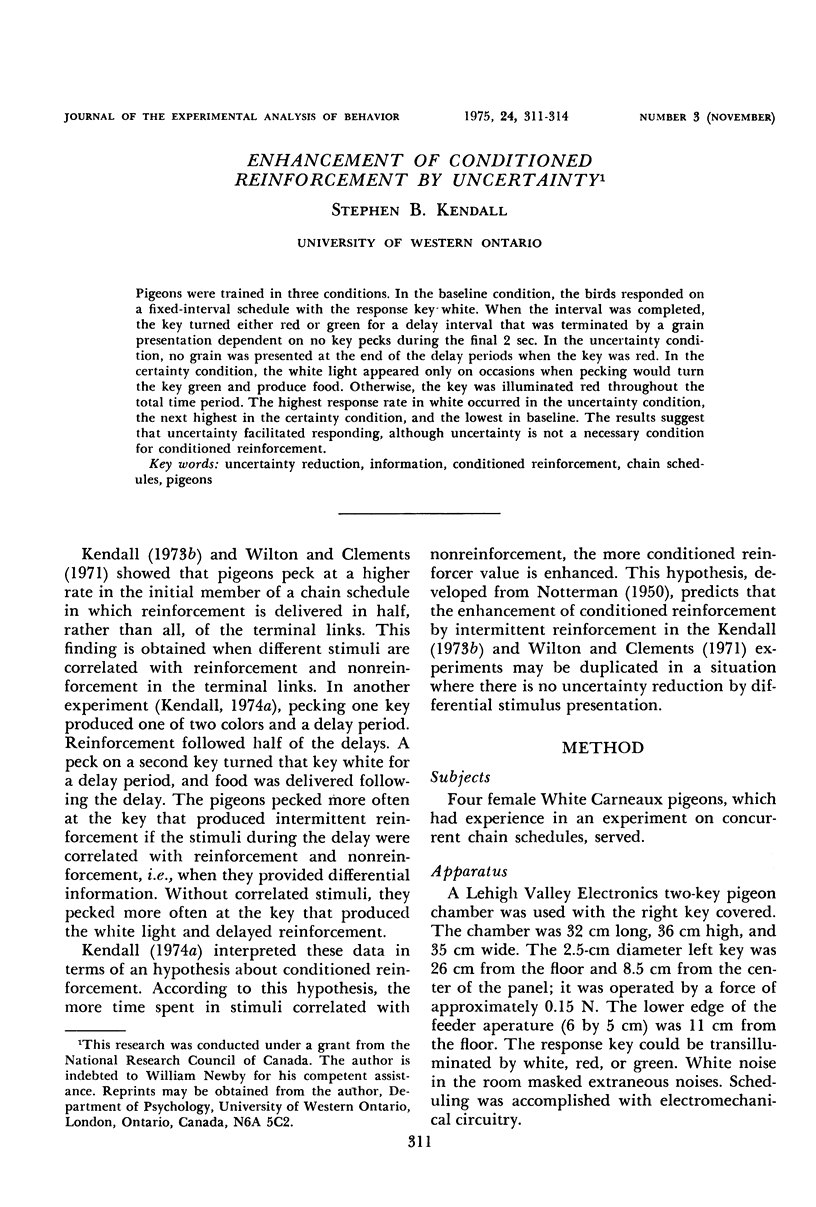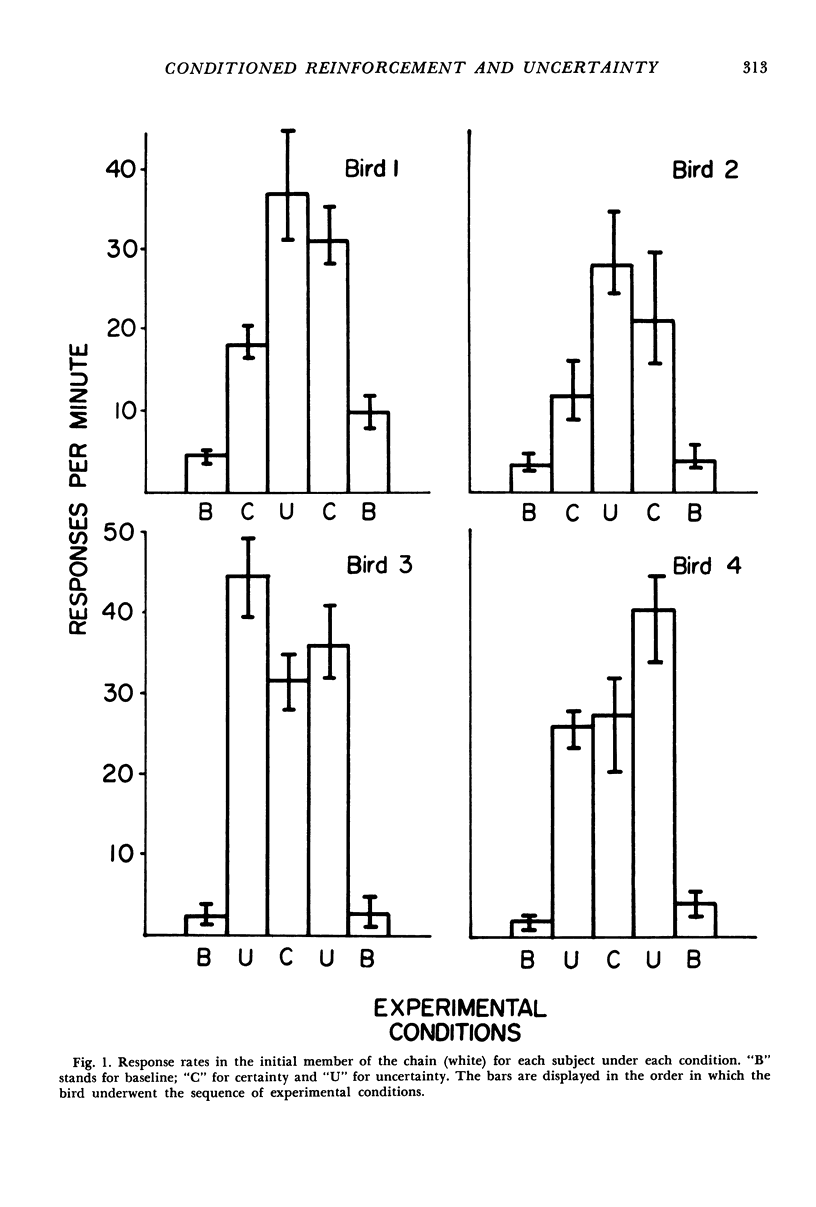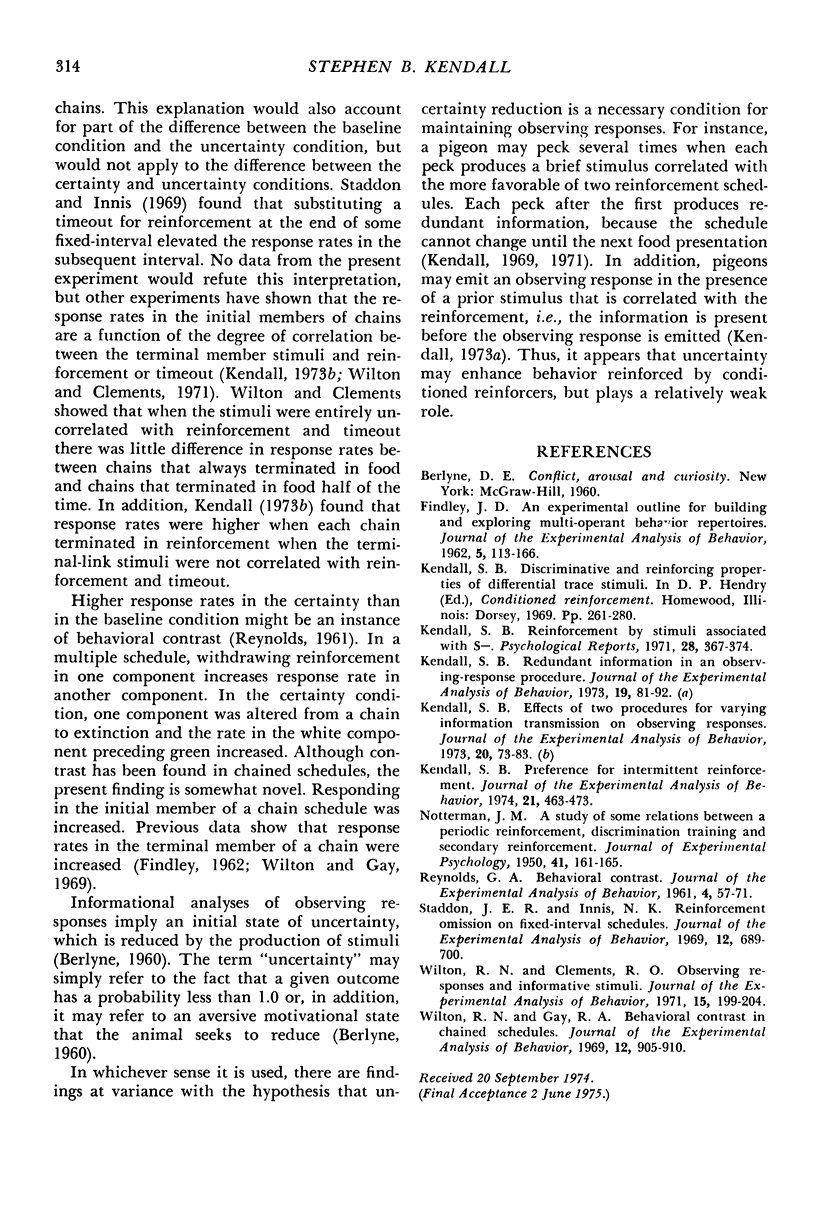Abstract
Pigeons were trained in three conditions. In the baseline condition, the birds responded on a fixed-interval schedule with the response key white. When the interval was completed, the key turned either red or green for a delay interval that was terminated by a grain presentation dependent on no key pecks during the final 2 sec. In the uncertainty condition, no grain was presented at the end of the delay periods when the key was red. In the certainty condition, the white light appeared only on occasions when pecking would turn the key green and produce food. Otherwise, the key was illuminated red throughout the total time period. The highest response rate in white occurred in the uncertainty condition, the next highest in the certainty condition, and the lowest in baseline. The results suggest that uncertainty facilitated responding, although uncertainty is not a necessary condition for conditioned reinforcement.
Keywords: uncertainty reduction, information, conditioned reinforcement, chain schedules, pigeons
Full text
PDF



Selected References
These references are in PubMed. This may not be the complete list of references from this article.
- FINDLEY J. D. An experimental outline for building and exploring multi-operant behavior repertoires. J Exp Anal Behav. 1962 Jan;5(Suppl):113–166. doi: 10.1901/jeab.1962.5-s113. [DOI] [PMC free article] [PubMed] [Google Scholar]
- Kendall S. B. Effects of two procedures for varying information transmission on observing responses. J Exp Anal Behav. 1973 Jul;20(1):73–83. doi: 10.1901/jeab.1973.20-73. [DOI] [PMC free article] [PubMed] [Google Scholar]
- Kendall S. B. Preference for intermittent reinforcement. J Exp Anal Behav. 1974 May;21(3):463–473. doi: 10.1901/jeab.1974.21-463. [DOI] [PMC free article] [PubMed] [Google Scholar]
- NOTTERMAN J. M. A study of some relations among aperiodic reinforcement, discrimination training and secondary reinforcement. J Exp Psychol. 1951 Mar;41(3):161–169. doi: 10.1037/h0061644. [DOI] [PubMed] [Google Scholar]
- REYNOLDS G. S. Behavioral contrast. J Exp Anal Behav. 1961 Jan;4:57–71. doi: 10.1901/jeab.1961.4-57. [DOI] [PMC free article] [PubMed] [Google Scholar]
- Staddon J. E., Innis N. K. Reinforcement omission on fixed-interval schedules. J Exp Anal Behav. 1969 Sep;12(5):689–700. doi: 10.1901/jeab.1969.12-689. [DOI] [PMC free article] [PubMed] [Google Scholar]
- Wilton R. N., Clements R. O. Observing responses and informative stimuli. J Exp Anal Behav. 1971 Mar;15(2):199–204. doi: 10.1901/jeab.1971.15-199. [DOI] [PMC free article] [PubMed] [Google Scholar]
- Wilton R. N., Gay R. A. Behavioral contrast in chained schedules. J Exp Anal Behav. 1969 Nov;12(6):905–910. doi: 10.1901/jeab.1969.12-905. [DOI] [PMC free article] [PubMed] [Google Scholar]


